Already in Roman occupation times, Niederanven was a town situated at the important road connection Arlon — Treves. It is supposed that Niederanven was famous for offering accommodation to travellers in these days. This path, following in the beginning the direction of the road to Mensdorf, slowly turned to a more northern direction to end up as the RN1 national road to Grevenmacher today.
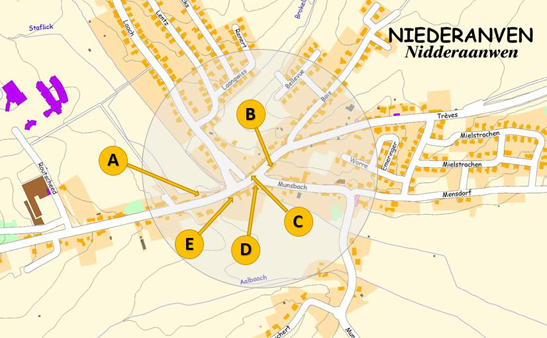
On the route de Trèves there had been 9 pubs in 1900. The “Zum Goldenen Apfel” where lazars could accommodate for free, was a part of the stage coach station. The only inn that is left is the “Hostellerie de Niederanven”. All others had been transformed into private dwellings.
In 1697 the old road between Luxembourg and Grevenmacher had been restored, 1722 a diligence station had been added and in 1730 the road had been extended up to Trèves. In 1727 the path from Brussels to Treves had been paved and Niederanven became a whistle stop, where customs duty was levied. Only in 1824 the customs stations were abolished.
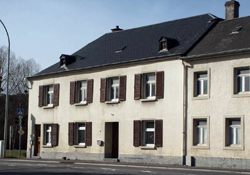 The old “Café Lampach” has been transformed in 2015 into a Bank agency of the Banque et Caisse d’Epargne de l’Etat. |
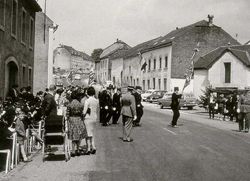 Up to the fifties most of the public life happened in the streets, just as it was usual to celebrate feasts in the street |
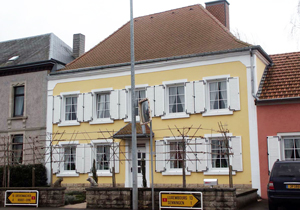 The old inn “Klein-Delahaye” is a private house today |
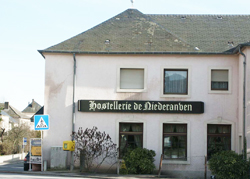 On the picture on the bottom on the very right side you can see the old “Café Winter-Remakel” later there was the “Hostellerie de Niederanven”. |
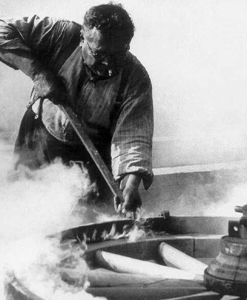
The local blacksmith Ed Winter while repairing a coach wheel.
In the village constantly showed a very agile activity as there were always many travellers. This was very helpful for the proliferation of local pubs and hostels (for example the “Au Cheval blanc” or the “An der Lomp”. The hostel “Zum goldenen Apfel” had been the accommodation for the lazars or poor people, who could not or only pay very few for a night.There had been a regular connection with the capital since 1841, when the stage coach service had been set up by the municipality. The postmaster and his coachmen did even dwell in the locality.
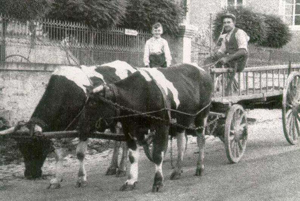
Transporting milk with an ox truck around 1941.
When in 1861 the railway line Luxembourg-Treves had been opened, the route de Trèves lost a bit of its importance. In spite of many protests from influent landowners against the construction of this railway line, it had however been put not far away from the Niederanven main road to Trèves.
The traffic at these times was quite small and only in the years around 1950, the horse wagons had only been replaced by cars and together with the generalmotorisation the local life, happening mainly in the street these days, shifted slowly into the private houses. The construction of the motorway later on did reduce considerably the traffic on the main road but still today many drivers use this national road RN1 to avoid traffic problems on the motorway.
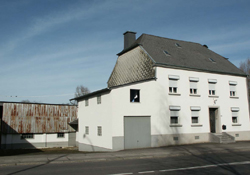 Niederanven was situated on the connection road Treves-Luxembourg City-Brussels. In the stables of the carriage station, reposed horses always waited to be used to pull the heavy loads up the hill to Senningerberg. This station also had a workshop for diligences, where the blacksmith could repair the broken wheels.
Niederanven was situated on the connection road Treves-Luxembourg City-Brussels. In the stables of the carriage station, reposed horses always waited to be used to pull the heavy loads up the hill to Senningerberg. This station also had a workshop for diligences, where the blacksmith could repair the broken wheels.

The inn “Au Cheval Blanc”(176 route de Trèves, on the right side of the picture) had been an hostel for waggoner and horses until 1902.
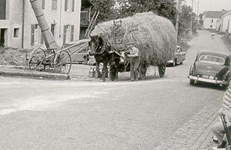
For the hay harvest the farmers did use for very long times their working horses. Only later those had been replaced by tractors.
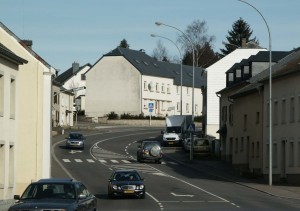
Today the streets are constructed in favour of the car traffic.
